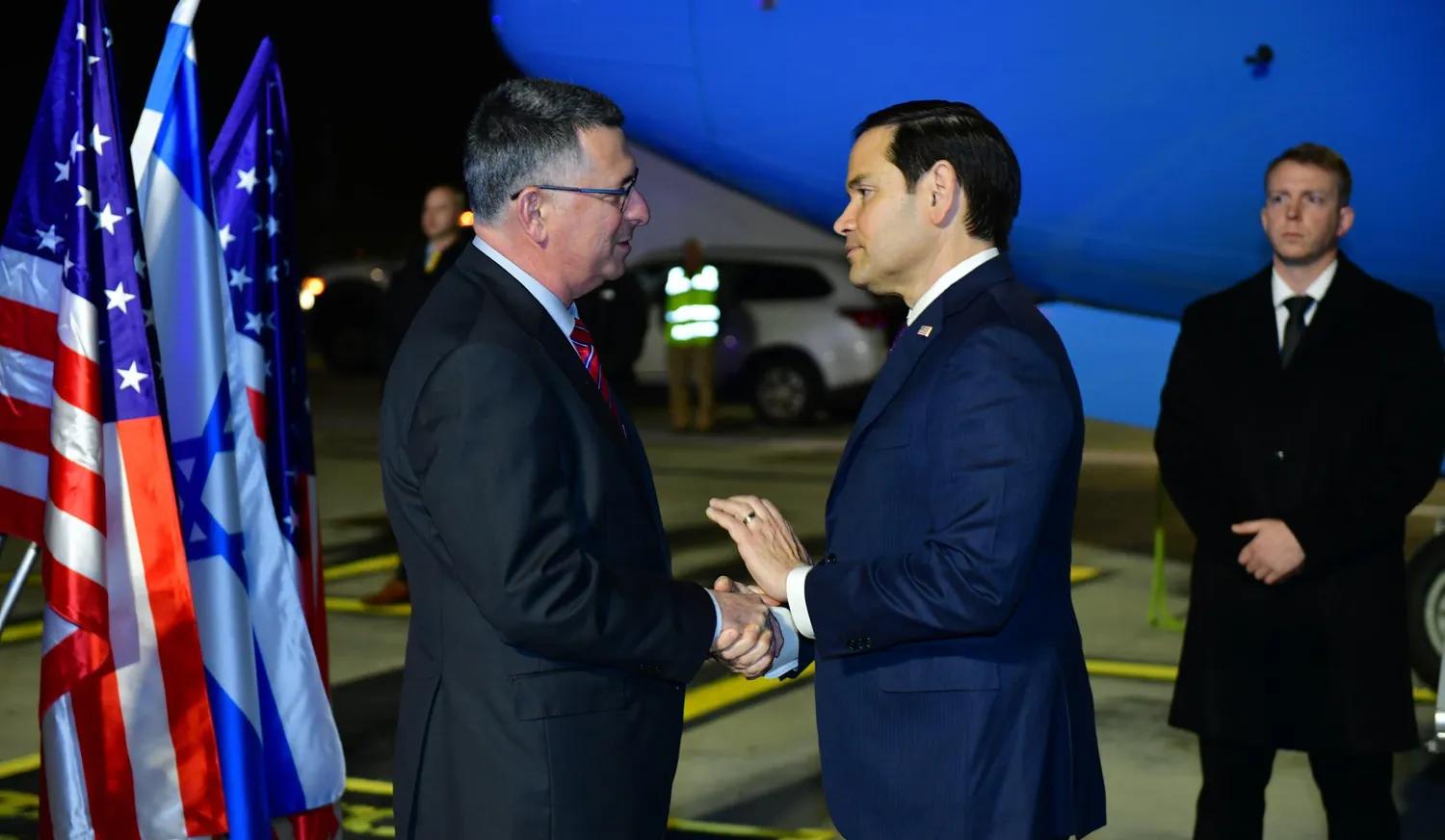U.S. Secretary of State Arrives in Israel to Advance Phase Two of Hamas Agreement
Rubio Set to Meet Netanyahu, Sa'ar, and Herzog Before Heading to Saudi Arabia and UAE

U.S. Secretary of State Marco Rubio arrived in Israel late Saturday night as part of a diplomatic effort to advance the implementation of Phase Two of the ceasefire agreement with Hamas.
His visit comes amid signals from Israeli Prime Minister Benjamin Netanyahu that he has no intention of proceeding with the next phase of the deal. Rubio’s visit will last until Monday, after which he will travel to Saudi Arabia and the United Arab Emirates. In an unusual departure from standard diplomatic protocol, Rubio will not meet with Palestinian Authority leaders or visit Ramallah.
U.S. State Department spokesperson Tammy Bruce stated earlier this week that Rubio’s trip to the Middle East would focus on securing the release of American and other hostages held by Hamas, advancing the second phase of the ceasefire agreement in Gaza, and countering the destabilizing actions of the Iranian regime and its proxies.
Follozing U.S. President Donald Trump’s statements about relocating Gaza’s population and taking control of the territory—positions that Netanyahu and his security cabinet have at least verbally supported—the explicit mention of Phase Two in the State Department’s agenda signals the administration’s commitment to the continuation of the agreement. This, coupled with the successful hostage release yesterday and Trump’s unfulfilled threats to resume military operations in Gaza, underscores Washington’s position.
Earlier this evening, protests took place in Tel Aviv calling for the continued release of hostages. Meanwhile, both the Prime Minister’s Office and Israel’s Foreign Ministry imposed restrictions on media coverage of Rubio’s visit, limiting press access to key events.
Since Netanyahu’s visit to the White House earlier this month, Israeli officials have indicated that they have no intention of moving forward with the next stage of the agreement, which would involve withdrawing from the Philadelphi Corridor. On Thursday, Netanyahu’s spokesperson even denied remarks by Knesset Foreign Affairs and Defense Committee Chairman Yuli Edelstein, which suggested that negotiations for implementing Phase Two were already underway.
While Netanyahu’s office has refrained from disclosing details about his upcoming meeting with Rubio, the U.S. State Department has been more transparent. Responding to Haaretz regarding the apparent contradiction between promoting the next phase of the deal and Trump’s proposed population transfer, spokesperson Bruce stated that “partner countries must develop a post-war reconstruction plan for Gaza.”
She added that Rubio’s meetings would focus on building “a broad coalition of partners to support this effort.”
Bruce further emphasized, “It is time for outside-the-box thinking. The era of outdated ideas is over.” She stressed that “President Trump’s proposal is the only alternative currently on the table”.
Bruce also made it clear that the U.S. is open to hearing alternative proposals from its regional allies:
"If partner nations have concerns, we want to hear their ideas for bringing real change to Gaza and improving conditions for the Palestinians who live there. Our top priorities are ensuring Israel’s long-term security and ending Hamas’ rule in Gaza to prevent another October 7 scenario.”
Her remarks align with statements Rubio made in a Thursday interview with The Clay Travis & Buck Sexton Show. Addressing Trump’s plan for relocating Gaza’s population, Rubio stated:
"If Arab nations have a better plan, that’s great… We will review it and see what they propose. But any plan that allows Hamas to remain is problematic because Israel will not tolerate that, and we will be back in the same situation. However, we are giving them the opportunity to present an alternative."
Rubio’s comments provide insight into his objectives for meetings in Saudi Arabia and the UAE, as well as his anticipated discussions in Israel—pressuring Netanyahu to engage in substantive negotiations with Hamas for implementing Phase Two of the ceasefire deal.
Upon his arrival at Ben Gurion Airport, Rubio was greeted by Israeli Foreign Minister Gideon Sa’ar. His itinerary on Sunday includes a busy schedule starting with a morning meeting with Netanyahu at 10:00 AM. Following this, Rubio will participate in an expanded meeting that will also include Sa’ar, according to an official statement from the Israeli Foreign Ministry.
At the conclusion of these meetings, Rubio and Netanyahu are expected to deliver a joint statement to the press, though media access has been restricted to a select group of journalists. Later, Rubio will meet with Israeli President Isaac Herzog and visit the Yad Vashem Holocaust Memorial. The U.S. Secretary of State and his Israeli counterpart will then hold another press conference, again with limited media access.
These restrictions on press coverage of Rubio’s visit stand in stark contrast to the extensive media engagement that the White House, Pentagon, and Congress facilitated during Netanyahu’s recent visit to Washington.